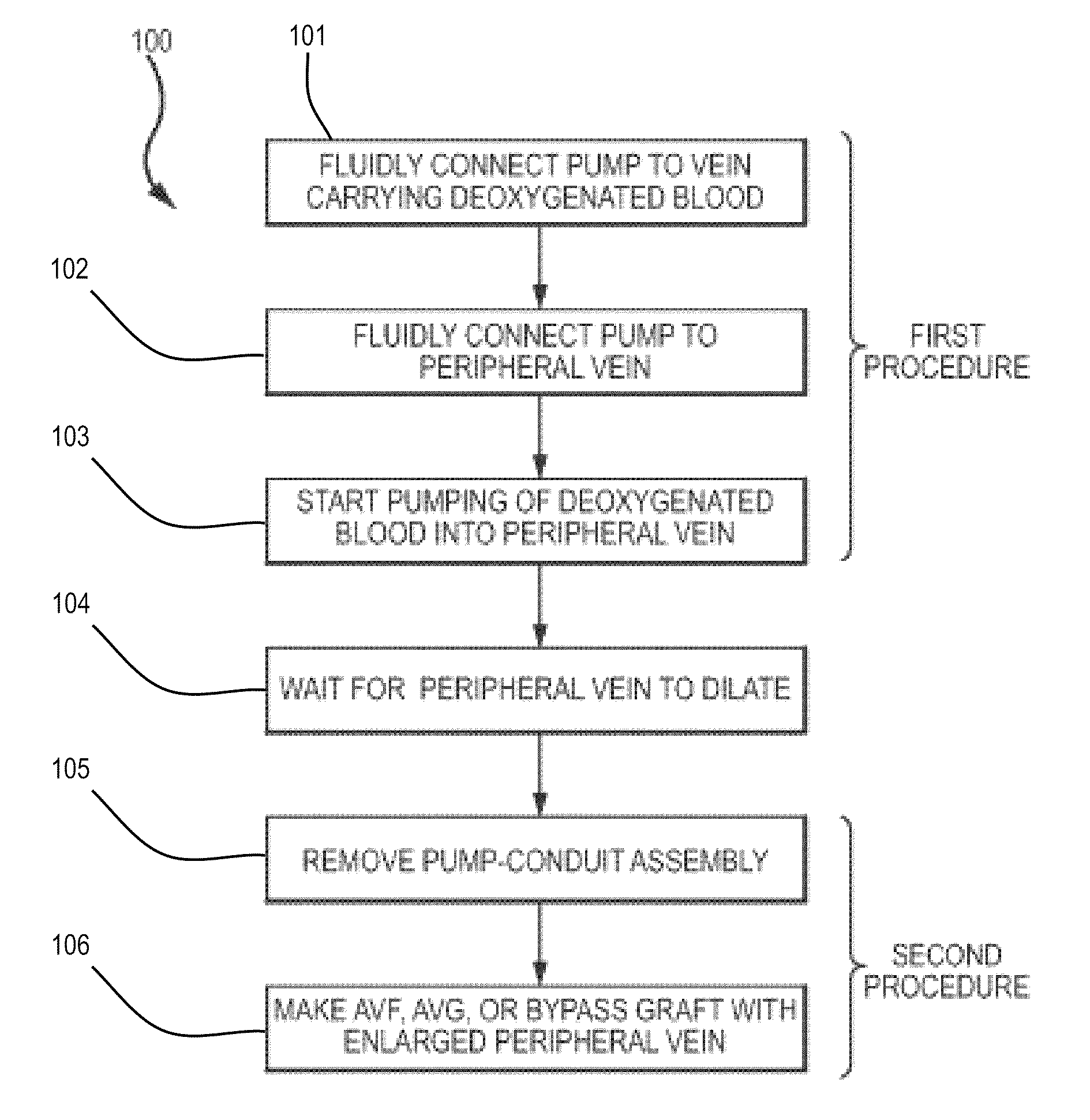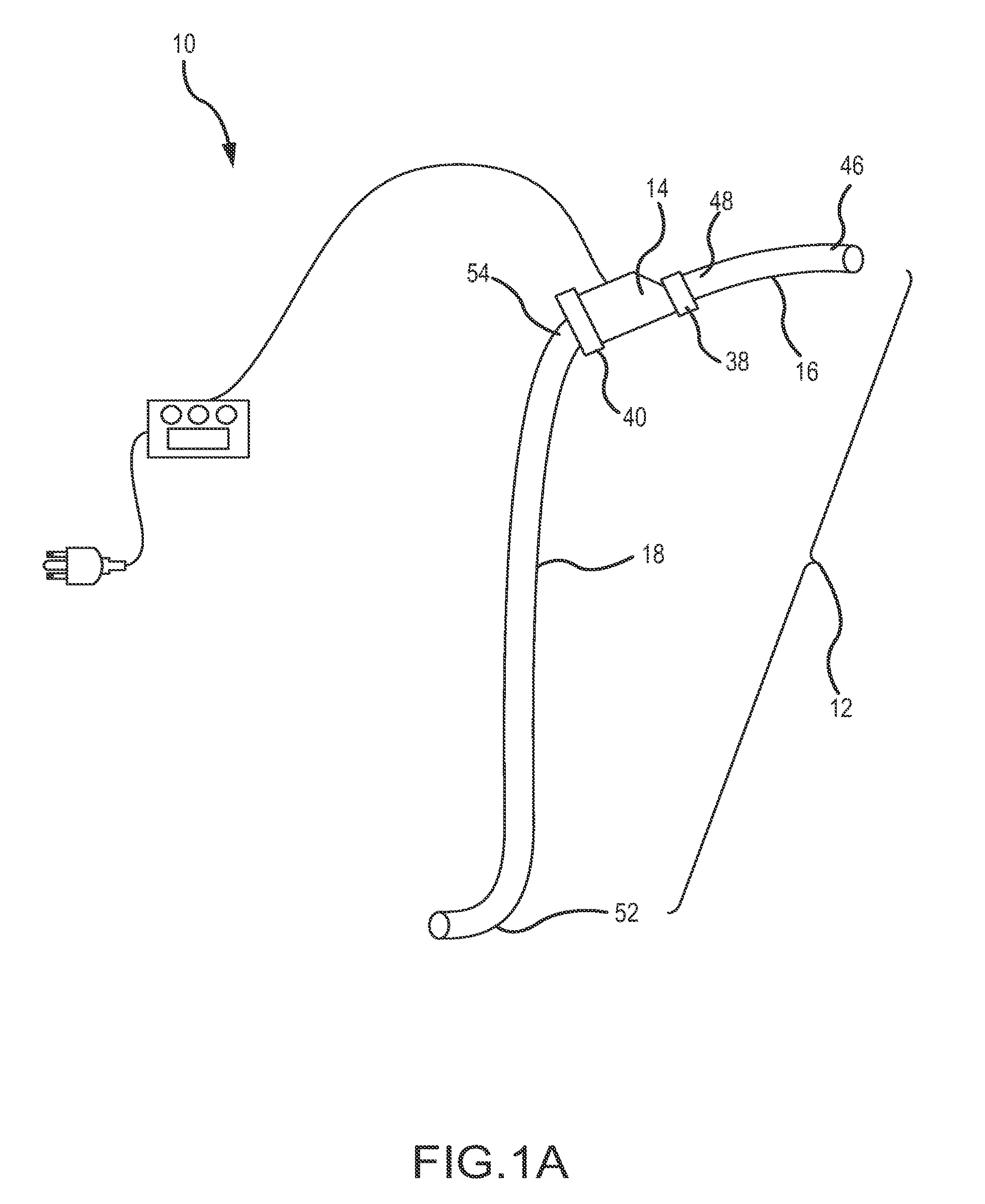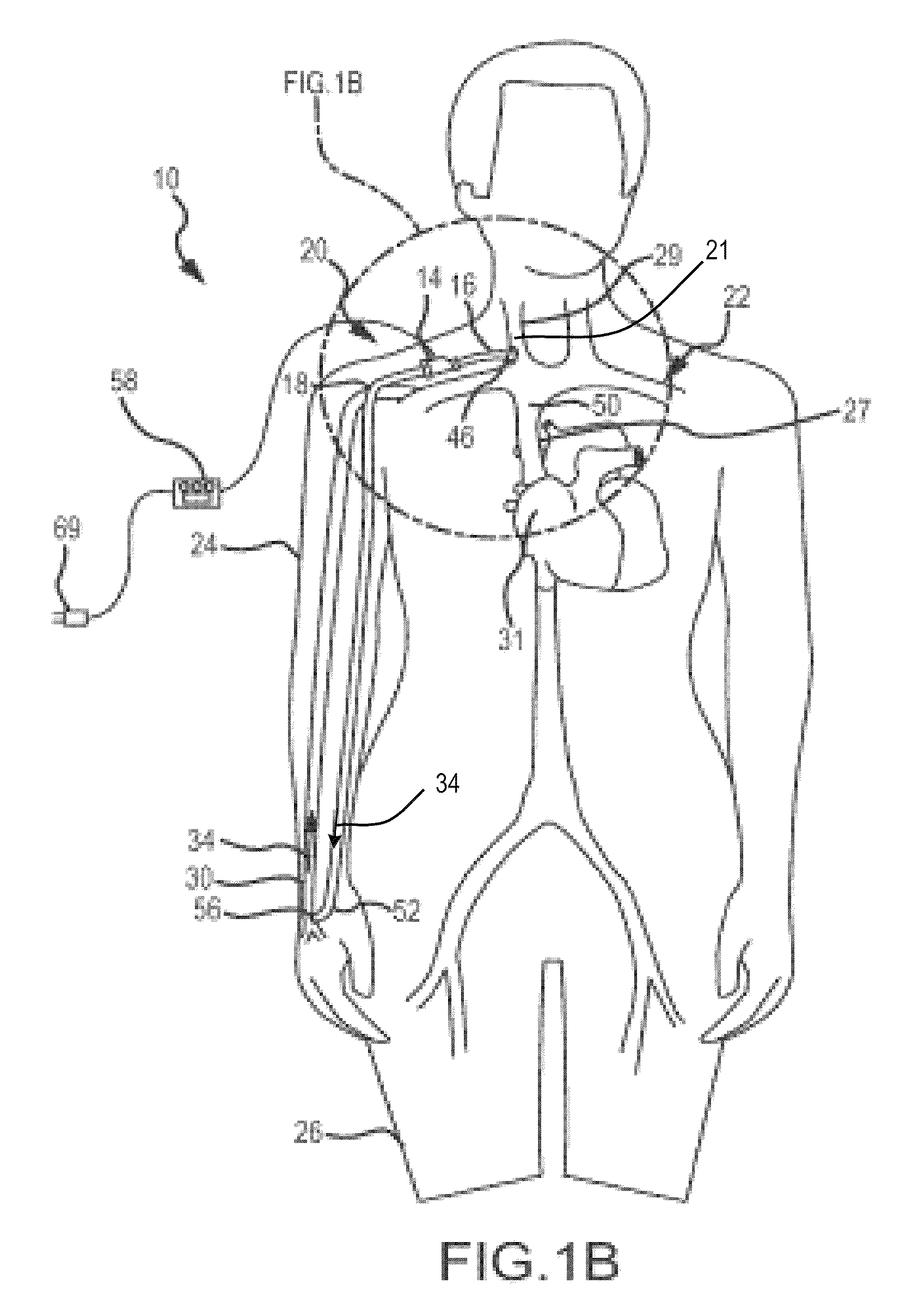System and method to increase the overall diameter of veins
a technology of overall diameter and vein diameter, which is applied in the field of system and method to increase the overall diameter of veins, can solve the problems of high failure rate and complications of each type of site, high burden on health care providers, payers, etc., and achieve the effect of facilitating diagnostic angiography
- Summary
- Abstract
- Description
- Claims
- Application Information
AI Technical Summary
Benefits of technology
Problems solved by technology
Method used
Image
Examples
Embodiment Construction
[0048]Preferred embodiments of the present invention will now be explained with reference to the drawings. It will be apparent to those skilled in the art from this disclosure that the following description of the embodiments of the present invention is provided for illustration only and not for limiting the invention as defined by the appended claims and their equivalents. Referring initially to FIGS. 1-4, a system 10 to increase the overall diameter of veins is illustrated as used for a patient 20. The system 10 removes deoxygenated venous blood from the patient's venous system 22 and redirects that blood into the accepting peripheral vein 30. The system 10 also increases the speed of blood in the accepting peripheral vein 30 and increases the WSS exerted on the endothelium of the accepting peripheral vein 30, to increase the diameter of the accepting peripheral vein 30 located, for example, in an arm 24 or a leg 26. The diameter of blood vessels such as peripheral veins can be de...
PUM
 Login to View More
Login to View More Abstract
Description
Claims
Application Information
 Login to View More
Login to View More - R&D
- Intellectual Property
- Life Sciences
- Materials
- Tech Scout
- Unparalleled Data Quality
- Higher Quality Content
- 60% Fewer Hallucinations
Browse by: Latest US Patents, China's latest patents, Technical Efficacy Thesaurus, Application Domain, Technology Topic, Popular Technical Reports.
© 2025 PatSnap. All rights reserved.Legal|Privacy policy|Modern Slavery Act Transparency Statement|Sitemap|About US| Contact US: help@patsnap.com



